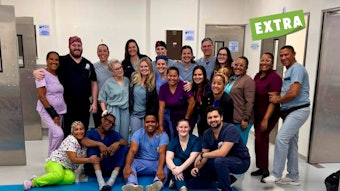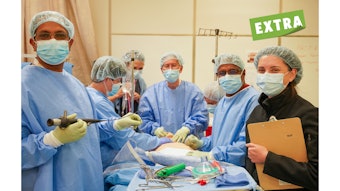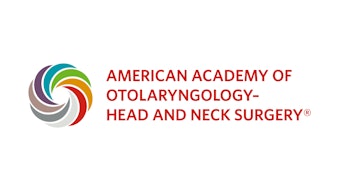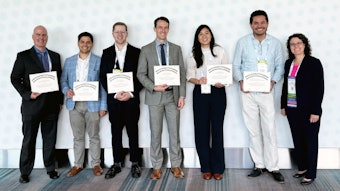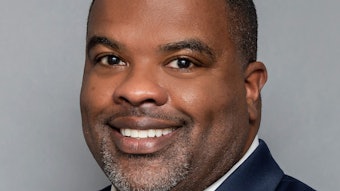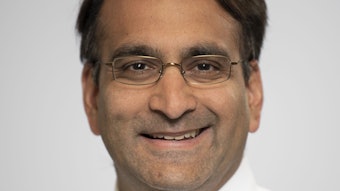A Call for Institutional Action and Collaboration
Otolaryngology training institutions can take collaborative action to address the 50-fold difference in the availability of otolaryngology care providers between high- and low-income countries to improve care worldwide.
Mary Jue Xu, MD, Rolvix H. Patterson, MD, Joshua Wiedermann, MD, Taseer F. Din, MD, Samuel Okerosi, MD, David A. Shaye, MD, Andrew N. Goldberg, MD, Johannes Fagan, MBChB, MMed, Samer Al-khudari, MD, Gregory Basura, MD, Robert M. Brody, MD, Ryan H. Belcher, MD, Susan Cordes, MD, Josephine A. Czechowicz, MD, Susan D. Emmett, MD, Howard Francis, MD, Lia Jacobson, MD, Ashok Jagasia, MD, Asitha Jayawardena, MD, Maxwell P. Kligerman, MD, Walter T. Lee, MD, Willybroad Massawe, MD, Isaie Ncogoza, MD, James Netterville, MD, Jason G. Newman, MD, Aslam Nkya, MD, Mark E. P. Prince, MD, James E. Saunders, MD, Merry Sebelik, MD, Brent A. Senior, MD, Jeffrey D. Sharon, MD, Mark G. Shrime, MD, Travis Tollefson, MD, Donald T. Weed, MD, Mark E. Zafereo, MD, Chad Zender, MD, and Blake Alkire, MD

Background
Each year, over 300 otolaryngology-head and neck surgery residents from the U.S. graduate and enter the workforce. In cities such as Boston and Philadelphia, more residents graduate annually than there are otolaryngologists in entire countries. For example, Zambia has fewer than 10 otolaryngologists for 19 million people. However, the burden of head and neck disease is greatest in low- and middle-income countries (LMICs), where human resources for otolaryngology-head and neck surgery care are not commensurate with populations and starkly contrast with those in high-income countries (HICs). What role can we and our institutions play in eliminating these stark disparities? Otolaryngology-head and neck surgery training institutions and providers in HICs should commit to enhancing the otolaryngology-head and neck surgery workforce worldwide. By doing so, we can help address the growing burden of head and neck diseases and advance equitable access to care worldwide.
Although the burden of head and neck disease is greatest in LMICs, disproportionate human resources for otolaryngology care are centered in HICs. Of the 1.5 billion people worldwide with hearing loss, 80% reside in LMICs.1 Similarly, 67% of head and neck cancer cases and 82% of deaths occur in LMICs.2 The insufficient otolaryngology-head and neck surgery workforce and limited access to training opportunities exacerbate these disparities. On average, there are 5.17 otolaryngology-head and neck surgery providers per 100,000 population in HICs compared with 0.1 in low income countries—a 50-fold difference.3 Furthermore, there are four head and neck surgery fellowship programs for a population of one billion people in sub-Saharan Africa, despite a projected 49% increase in head and neck cancer mortality from 2016–2030.2 In contrast, the U.S. population of 330 million people is serviced by 53 accredited head and neck fellowship programs. Recent research upholds the critical importance of the surgical workforce in determining health outcomes in LMICs, finding associations between higher surgical workforce density and reduced head and neck cancer mortality.2 This association similarly extends to diseases including chronic otitis media.4
Along with a commitment to advance health as outlined by the mission statements of HIC academic institutions, investment in global health benefits all patients. Interventions developed in resource-constrained settings, such as lower-cost point of care ultrasound, ethical frameworks for cancer care triage in pandemics, and novel telemedicine referral pathway for childhood hearing loss are cost-effective innovations that can be adapted and improve care in all healthcare settings.5-7 These innovations address disparities related to distance, constrained resources, and stigma that are present in all countries. Finally, collaborative efforts with LMIC colleagues enhance the breadth of perspectives while strengthening the effectiveness and application of these solutions.
How Can Otolaryngology Training Institutions Address These Disparities?
Otolaryngology-head and neck surgery training institutions have an essential role to play in achieving a shared commitment to excellence in care worldwide. Here, we recommend four measures for consideration:
1. Valuing global capacity building and partnerships: Over the past several decades, global health has evolved from participation in short-term surgical mission trips to encompass more robust approaches to long-term capacity building. Longitudinal surgical paradigms emphasizing training, supporting faculty under broader collaborations, and recognizing efforts to build long-term collaborations are all sustainable, effective approaches to capacity building. Academic departments in HICs can value this work by assigning merit to faculty training efforts in LMICs when it comes to academic advancement. As the impact of academic efforts in global health becomes valued, career pathways and funding opportunities will continue to grow.
2. Supporting observerships and clinical training: In addition to observerships for LMIC trainees in HICs, hands-on training is critical. Administrative and legislative hurdles for clinical training exist in countries such as the U.S., though, opportunities, including several fellowships, are currently open to international trainees. Furthermore, training in other LMIC institutions may be preferred over that in HICs; LMIC institutions may offer experiences similar to that in the home country and have less stringent visa requirements, an obstacle to full clinical participation. Simulation and dissection courses are additional approaches that can provide hands-on education. Finally, HIC institutions can support training within existing collaborations and locally established residencies and fellowships.
3. Promoting participation in research: Production and consumption of scientific research is not distributed equally.8 An authorship review of manuscripts about sub-Saharan Africa found a mere 23% of first authors were from the local region.9 The academic structure for HIC researchers contributes to this by incentivizing the use of data from LMICs for career advancement and valuing the volume of publications over investing time into community-engaged research. Furthermore, valuable clinical research is often blocked by paywalls, rendering it inaccessible to LMIC clinicians, and open access publication is too costly for many LMIC researchers.8 To address these issues, we must approach collaborations with an ethical lens, advocate for criteria for HIC academic promotion to value partnership with LMIC colleagues, expand access to knowledge by publishing in open access journals when feasible, and invest in LMIC research infrastructure and researchers.
4. Supporting open access educational resources: With high variability in access to knowledge and financial resources, medical education in LMICs benefits greatly from high-quality, accessible educational resources. Educational content—podcasts, lectures, surgical videos, conferences, and textbooks10—can be freely posted on web-based platforms. This benefits trainees and clinicians across all health settings.
To practically fund these efforts, we need to develop novel partnerships with philanthropy, governments, and hospital systems. Furthermore, there is potential in cross-institutional collaborations to leverage the resources of multiple HIC institutions and to create a collaborative consortium within our field.
With another year of graduations, we celebrate the otolaryngology-head and neck surgery workforce growth in HICs. We must also recognize that these achievements represent more than just success within our academic communities. Rather, they signify an opportunity for meaningful change on a global scale, where the concerted efforts of training institutions and the broader otolaryngology-head and neck surgery community can improve healthcare access worldwide.
References
- Chadha S, Kamenov K, Cieza A. The world report on hearing, 2021. Bull World Health Organ. 2021;99(4):242-242A.
- Patterson RH, Fischman VG, Wasserman I, et al. Global Burden of Head and Neck Cancer: Economic Consequences, Health, and the Role of Surgery. Otolaryngol Head Neck Surg. 2020;162(3):296-303.
- Petrucci B, Okerosi S, Patterson RH, et al. The Global Otolaryngology-Head and Neck Surgery Workforce. JAMA Otolaryngol Head Neck Surg. 2023.
- Stanford-Moore GB, Cahill G, Raj A, Irakoze P, Alkire B, Bhutta MF. Density of Health Workforce Correlates to Disease Outcomes: Evidence From Global Data in Otolaryngology. OTO Open. 2022;6(1):2473974X221089840.
- Immelt JR, Govindarajan V, Trimble C. How GE Is Disrupting Itself. 2009. doi:https://hbr.org/2009/10/how-ge-is-disrupting-itself.
- DeBoer RJ, Fadelu TA, Shulman LN, Van Loon K. Applying Lessons Learned From Low-Resource Settings to Prioritize Cancer Care in a Pandemic. JAMA Oncol. 2020;6(9):1429-1433.
- Emmett SD, Platt A, Turner EL, et al. Mobile health school screening and telemedicine referral to improve access to specialty care in rural Alaska: a cluster- randomised controlled trial. Lancet Glob Health. 2022;10(7):e1023-e1033.
- Seguya A, Salano V, Okerosi S, et al. Are open access article processing charges affordable for otolaryngologists in low-income and middle-income countries? Curr Opin Otolaryngol Head Neck Surg. 2023;31(3):202-207.
- Hedt-Gauthier BL, Jeufack HM, Neufeld NH, et al. Stuck in the middle: a systematic review of authorship in collaborative health research in Africa, 2014-2016. BMJ Glob Health. 2019;4(5):e001853.
- Fagan JJ. Open Access Publishing of Textbooks and Guidelines for Otolaryngologists in Developing Countries. OTO Open. 2019;3(3):2473974X19861567.


